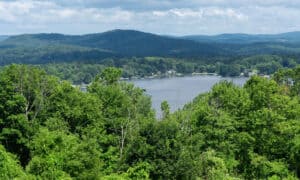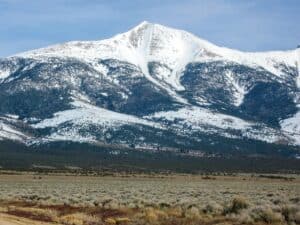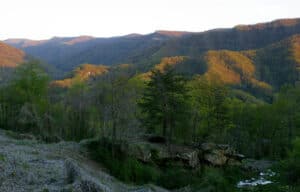The tallest mountain in Oregon is the majestic Mount Hood, a towering peak that stands 11,239 feet above sea level. While the snow-capped Mount Hood is one of the most popular destinations for mountain climbers worldwide, it’s also home to several amazing animals.
In this guide, we’ll explore six species of animals that live on Oregon’s tallest mountain. Read on to learn more!

1. Mountain Lion (Puma concolor)
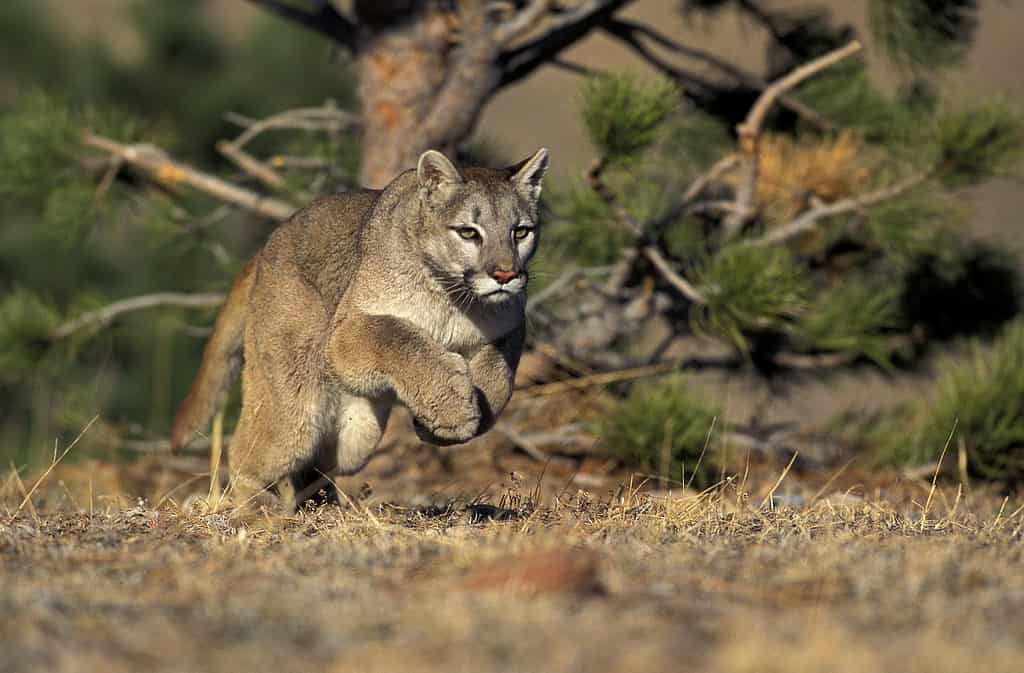
A small population of
mountain lions
inhabit Mount Hood, up to around 10,000 feet in elevation.
©iStock.com/slowmotiongli
The mountain lion (Puma concolor), also known as the puma and cougar, can reside up to 10,000 feet in elevation on Mount Hood. In total, Oregon is home to over 6,000 mountain lions.
They primarily inhabit the central and eastern side of the Cascade range, where they thrive in the arid, Mediterranean and high desert environment. Mountain lions mainly hunt deer but are opportunistic carnivores and will prey on anything from rodents to coyotes. You’re pretty unlikely to see a mountain lion when visiting Mount Hood. These animals are elusive, and no large population roams the mountain.
2. Rocky Mountain Elk (Cervus canadensis nelsoni)

Rocky Mountain elks are most prevalent throughout eastern and south-central Oregon. Look for these critters on the east side of Mount Hood.
©iStock.com/MattCuda
The Rocky Mountain elk (Cervus canadensis nelsoni) typically inhabits the eastern side of Mount Hood. The Rocky Mountain elk population thrives at about 74,000 individuals throughout eastern and south-central Oregon. They are notably smaller, with less bulk fur, and lighter in color than the Roosevelt elk (Cervus canadensis roosevelti), which tend to occupy western Oregon. This region has several predators, including mountain lions, coyotes, black bears, and possibly the occasional gray wolves.
While the Rocky Mountain elk is smaller, it bears the largest and heaviest antlers of all elk. The antlers on these animals can weigh up to 40 pounds. These elk prefer living in open areas. During the hot summer, they occur at higher elevations, between 6,000 and 10,000 feet.
3. Bobcat (Lynx rufus)
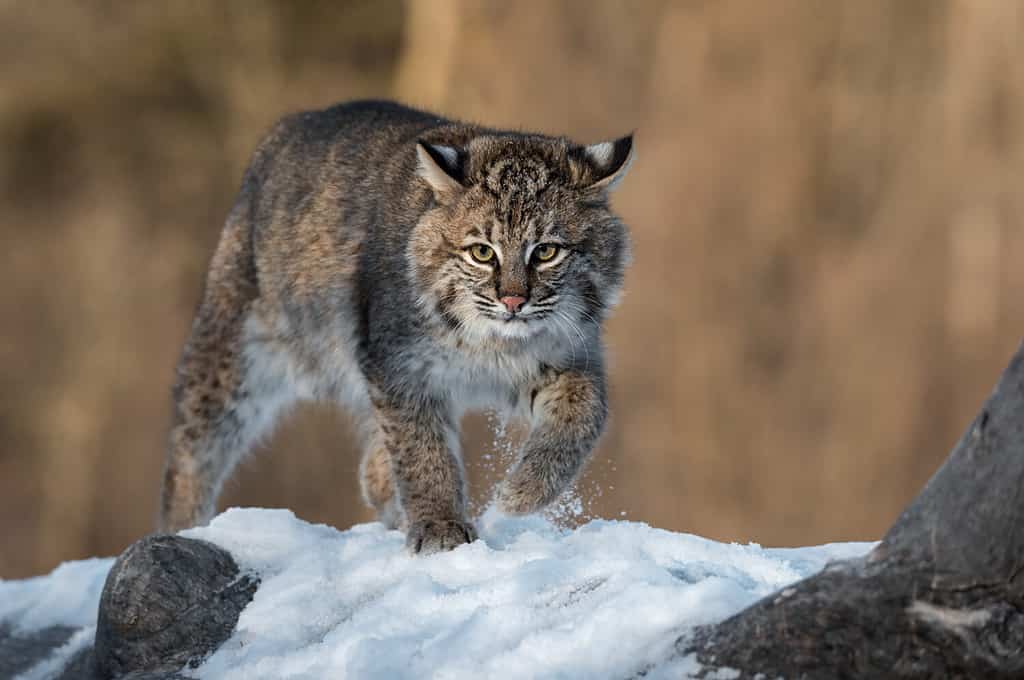
Oregon’s smallest wild felid, the
bobcat
, thrives in the snowy climate of Mount Hood’s higher elevations.
©Holly Kuchera/Shutterstock.com
The bobcat (Lynx rufus), also known as the wildcat, is the smallest wild feline in Oregon, behind the mountain lion and Canada lynx. The bobcat occurs throughout Oregon, and 5,000-7,000 individuals are likely currently roaming the state. These muscular, thick-coated cats are well-suited for the snowy environment found on the upper elevations of Mount Hood.
These wild felids can be active during any part of the day but are mainly crepuscular, choosing to do most of their roaming and hunting at dusk and dawn. They are adaptable carnivores and prey mostly on small mammals and birds. Occasionally, they will take down a deer or feast on deer carrion. If you are hiking Mount Hood around dawn, you may be lucky enough to spot one of these solitary animals slinking through a meadow or forest.
4. Northern Pygmy Owl (Glaucidium californicum)
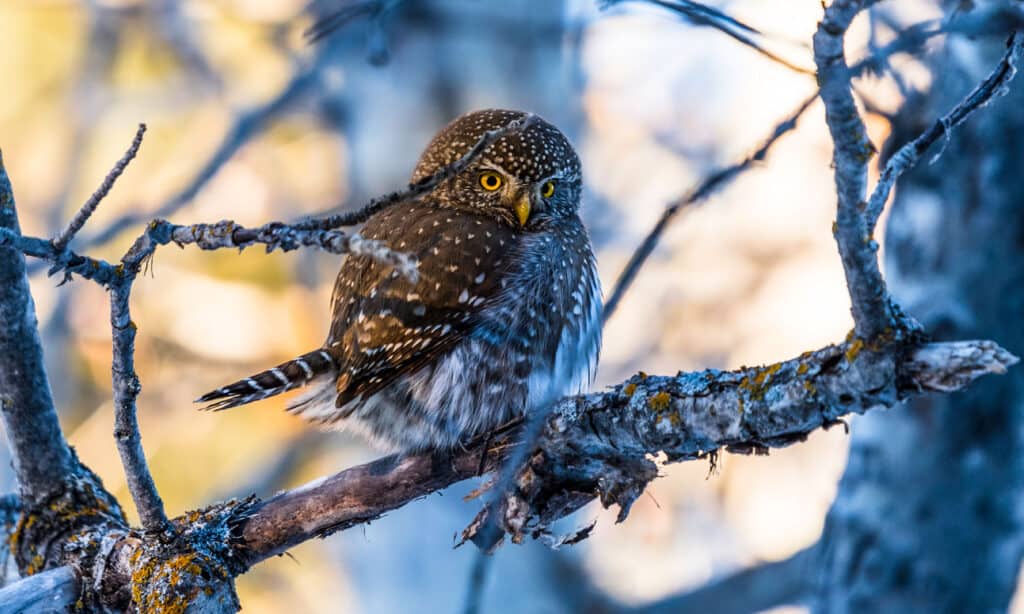
The northern pygmy owl is a small but fierce bird of prey.
©Jordan Feeg/Shutterstock.com
Widespread throughout Oregon, with populations concentrated along the coast and in eastern Oregon, the northern pygmy owl (Glaucidium californicum) is quite the voracious predator. Small but mighty, standing at just 6-7 inches tall, this tiny owl is known to prey on birds and mammals over twice its size.
You are most likely to spot this little critter along the eastern side of Mount Hood, up to 6,000 feet in elevation. They are often quite active during the day, so if you’re observant, you may see this feisty owl perched on a branch or soaring over a meadow, eyeing her next meal.
5. Snowshoe Hare (Lepus americanus)

In the winter, the snowshoe hare perfectly fits Mount Hood’s snowy environment.
©FotoRequest/Shutterstock.com
Camouflaged against the wintery backdrop of Mount Hood’s upper elevations is the swift snowshoe hare (Lepus americanus). With coasts that turn a striking white in the winter, snowshoe hares are ideally suited for living on snow-capped Mount Hood. If you plan on hiking Mount Hood in the winter, you’ll likely come across the tracks of this hare.
On Mount Hood, you may spot these hares bounding through woodlands as they traverse dense, young conifer forests and grassy thickets. Generally, snowshoe hares inhabit regions of Mount Hood above 4,000 feet in elevation.
6. Sierra Nevada Red Fox (Vulpes vulpes necator)
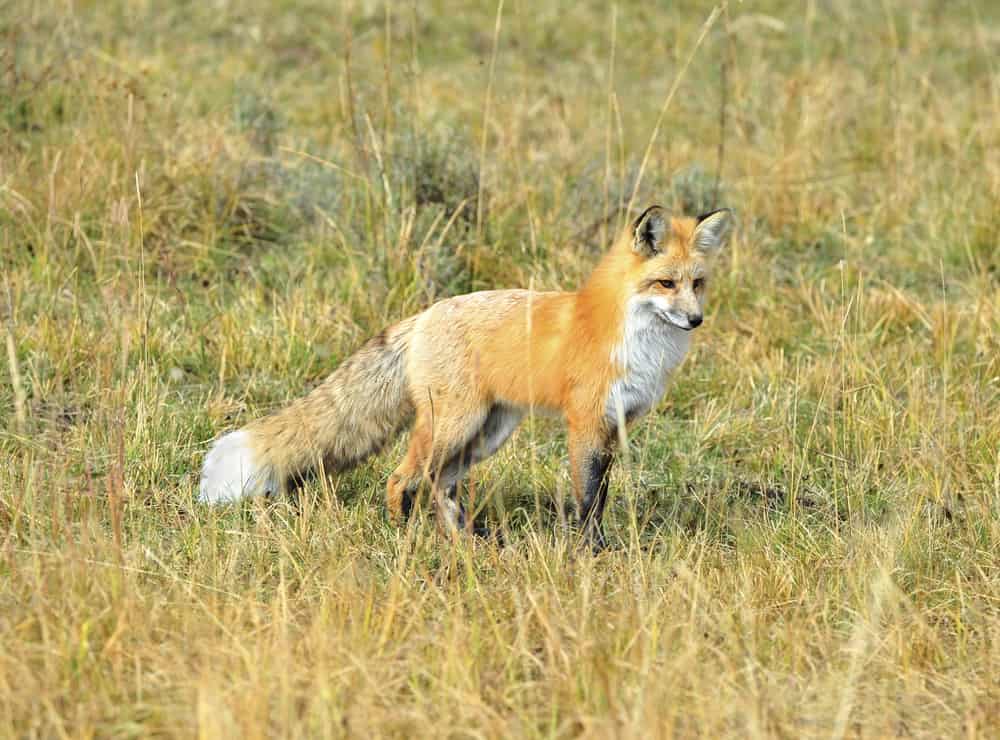
A small Sierra Nevada red fox population has recently moved into the Mount Hood region.
©worldswildlifewonders/Shutterstock.com
A subspecies of the red fox (Vulpes vulpes), the Sierra Nevada red fox (Vulpes vulpes necator) is the rarest and most threatened subspecies. In 2012, scientists discovered that a small Sierra Nevada red fox population had moved into the Mount Hood region. They thrive at 6,000 feet high and prefer these altitudes to avoid competition with coyotes, which occur at lower elevations.
Summary of 6 Animals That Lurk Atop Oregon’s Highest Mountain
| Animal | Scientific Name | |
|---|---|---|
| 1 | Mountain Lion | Puma concolor |
| 2 | Rocky Mountain Elk | Cervus canadensis nelsoni |
| 3 | Bobcat | Lynx rufus |
| 4 | Northern Pygmy Owl | Glaucidium californicum |
| 5 | Snowshoe Hare | Lepus americanus |
| 6 | Sierra Nevada Red Fox | Vulpes vulpes necator |
The photo featured at the top of this post is © jose1983/ via Getty Images
Thank you for reading! Have some feedback for us? Contact the AZ Animals editorial team.




